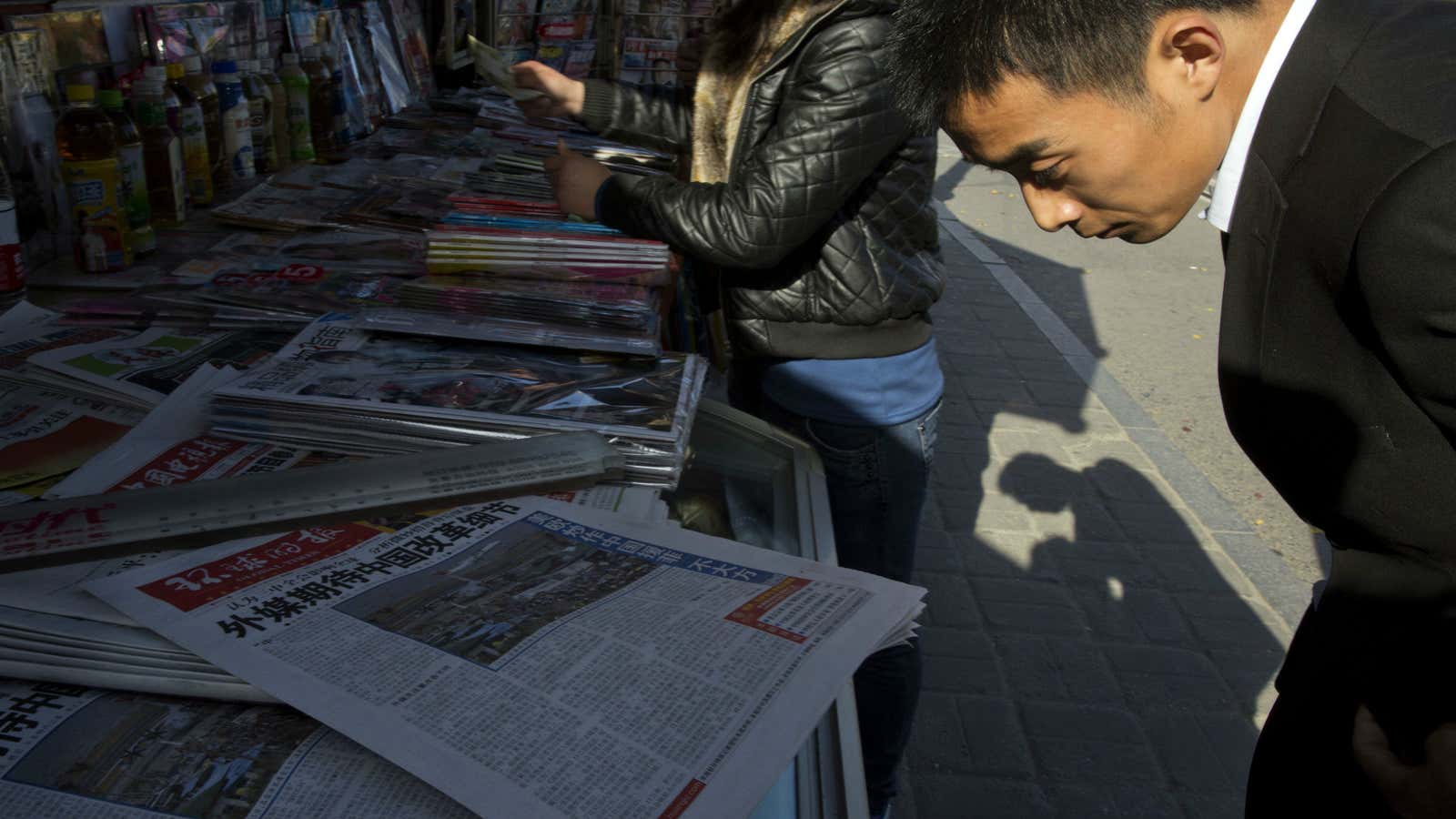China boasts over 1,000 daily newspapers with a circulation of over 100 million, and many of them are state-backed regional publications that dominate coverage of a given town or area. But they’re still under the same dual threats of shrinking circulation and advertising dollars as other newspapers around the world as Chinese readers embrace the internet.
Enter Alibaba, the Chinese e-commerce giant. The company has partnered with 12 different papers across China, including the Beijing News and the Southern Metropolis Daily, to try to convince customers to buy more newspapers and also to shop on Taobao, Alibaba’s online shopping mall. Newspaper readers can scan the “Shangtao Code”— a Quick Response or QR code (they’re these square barcodes)—to immediately purchase Taobao products in the Southern Metropolis Daily, for example. To draw new readers right away, during the first four days of April buyers who scan the QR code from any of the 12 papers can buy 1 yuan (about 16 US cents) promotional items on Taobao.
The Southern Metropolis Daily will “become a mobile product ‘window'” that is delivered across the city, explains an article from the paper’s parent company (link in Chinese). “Many mobile internet watchers believe that through the incorporation of the ‘Shangtao Code’, the value of the newspaper would be revalued,” it adds optimistically.
China’s voluble social media users, while excited about the 1 yuan Taobao promotions, weren’t so sure about the dead tree part. “You must first buy the newspaper?” asked one commentator on Sina Weibo (link in Chinese, login required). “Our school doesn’t even have a news stand,” complained another.
“Alibaba is going to save the paper media?,” asked a third. “I sincerely wish them the best.”
Jennifer Chiu contributed reporting.
